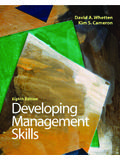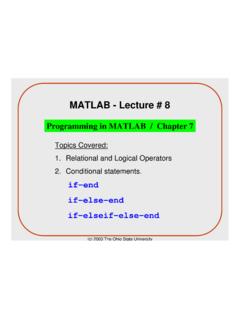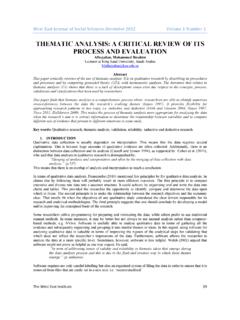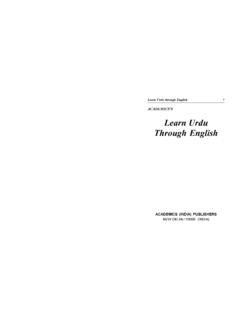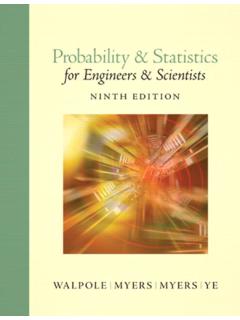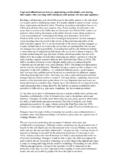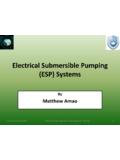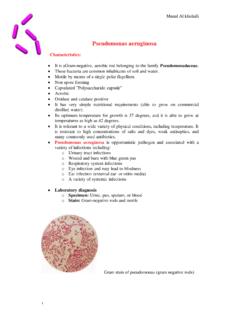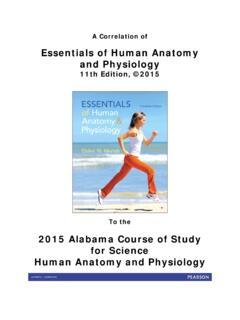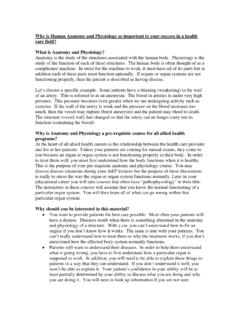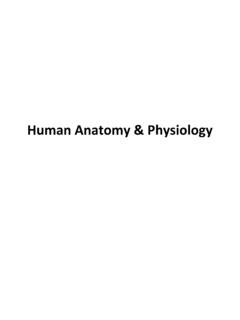Transcription of Human Anatomy & Physiology - fac.ksu.edu.sa
1 Human Anatomy & Physiology Final Exam Name: 1) Human blood: a) Is mostly composed of white blood cells b) Is primarily composed of both formed elements and plasma c) Has nucleated erythrocytes within it d) All of the above e) None of the above 2) The structural characteristic(s) of an erythrocyte that contribute to its function include: a) Its biconcave shape b) Its hemoglobin composition c) Its primary metabolic process for producing ATP d) All of the above e) None of the above 3) Starting at the inner most layer of the heart, and travelling outwards, the names of the layers in order are.
2 A) Pericardium, Epicardium, Myocardium and Endocardium b) Pericardium, Epicardium, Endocardium and Myocardium c) Epicardium, Endocardium, Myocardium and Pericardium d) Myocardium, Endocardium, Pericardium and Epicardium e) None of the above 4) Hypernatremia a) Depresses the heart b) Dramatically increases heart irritability c) Leads to heart block and cardiac arrest d) Blocks heart contraction by inhibiting ionic calcium transport 5) During exercise, the greatest increase in blood flow occurs in: a) Skeletal muscle b) Cardiac muscle c) Kidneys d) Liver e) None of the above 6) T cells a) Produce antibodies that immobilize antigens b) Attack and destroy foreign cells c) Produce plasma cells d) All of the above e) None of the above 7) The spleen a) Is a site of lymphocyte proliferation b) Is involved with immune system surveillance and response c) Cleanses the blood d) All of the above e) None of the above Match the following terms with their definitions 8) Neutrophil 9) IgA 10) IgG 11) IgM 12) Eosinophil 13) Mast Cell 14) Macrophage a)
3 An antibody dimer that helps prevent the attachment of pathogens to epithelial cell surfaces b) A white blood cell that releases histamine during inflammation c) A white blood cell that is partial to parasitic worms d) An antibody monomer that is the most abundant and diverse antibody during the primary and secondary immune response e) A white blood cell that is partial to bacteria and fungi f) A antibody pentamer released by plasma cells during the primary immune response g) The primary phagocyte of the immune system 15) Which of the answers below puts the three divisions of the pharynx in order?
4 (Start with the most cranial section and end with the most caudal section.) a) Nasopharynx, Oropharynx and Laryngopharynx b) Oropharynx, Nasopharynx and Laryngopharynx c) Laryngopharynx, Oropharynx and Nasopharynx d) Oropharynx , Laryngopharynx and Nasopharynx e) None of the answers above are in the correct order 16) During a myogenic response in the kidneys a) An increase in systemic pressure causes the afferent arterioles to dilate b) An increase in systemic pressure causes the afferent arterioles to constrict c) The response prevents glomerular blood pressure from rising to damaging levels d) A & C e) B & C 17)
5 Vasodilation of the efferent arteriole from the glomerulus. a) Increases the hydrostatic pressure in the glomerulus b) Decreases GFR c) Decreases the hydrostatic pressure in the glomerulus d) Increases GFR e) A & D f) B & C g) A & B h) C & D 18) Angiotensin II a) Is a potent vasoconstrictor b) Increases MAP c) Stimulates the release of aldosterone d) Stimulates the release of ADH e) All of the above 19) Severe sweating will a) Cause a decrease in plasma volume b) Cause an increase in plasma osmolarity c) Increase the production of ANP d) Increase the production of ADH e) A, B, and D f) All of the above 20)
6 The detrusor muscles in the bladder are regulated by: a) The sympathetic nervous system b) The parasympathetic nervous system c) The somatic nervous system d) None of the above 21) Cells of the macula densa are: a) Enlarged smooth muscle cells b) Act as mechanoreceptors c) Have secretory granules that contain renin d) Function as chemoreceptors Match the digestive organ with its exocrine secretion(s). The same answer may be used more than once. 22) Stomach 23) Small Intestine 24) Esophagus 25) Mouth 26) Pancreas 27) Liver 28) Large Intestine a) Salt and water, mucus, amylase b) Mucus c) HCl, pepsin, mucus d) Digestive enzymes, bicarbonate e) Bile salts, bicarbonate and organic waste products f) Enzymes, salt and water, mucus 29) The brain testicular axis: a.
7 Is a positive feedback loop b. Involves FSH, LH, progesterone and testosterone c. Is involved in the hormonal regulation of the female reproductive tract d. All of the above e. None of the above 30) LH in men a. Causes the sustentacular cells to release ABP b. Stimulates the anterior pituitary to release FSH c. Is released by the hypothalamus d. Stimulates the interstitial cells to produce testosterone e. None of the above 31) Testosterone a. Must be synthesized from cholesterol b. Must be converted to DHT in the prostate to bind to the nucleus c. Causes growth in all the ducts, glands and in the penis d.
8 Boosts basal metabolic rate and influences behavior e. All of the above 32) The menstrual cycle can be divided into three continuous phases. Starting from the first day of the cycle, the correct order is: a. menstrual, proliferative, secretory b. menstrual, secretory, proliferative c. secretory, menstrual, proliferative d. proliferative, menstrual, secretory 33) Which of these spermatogenic cells is diploid? a. primary spermatocyte b. secondary spermatocyte c. spermatid d. none of them Matching match the structure with the definition 34) foramen ovale 35) ductus arteriosis 36) mesoderm 37) ectoderm 38) endoderm 39) ductus venosus 40) yolk sac 41) allantois 42) chorion 43) amnion a.
9 Forms a transparent membrane filled with amniotic fluid b. forms part of the digestive tube, the earliest blood cells and vessels and is the source of primordial germ cells c. a fetal shunt between the embryonic body and the inferior vena cava that bypasses the liver d. a precursor tissue for the nervous system tissue e. a fetal shunt between the right and left atria f. the structural basis for the umbilical cord g. the prescursor tissue for the epithelial lining of the digestive tract, the urinogenital system and the respiratory tract h. encloses the embryonic body and all other membranes i.
10 A fetal shunt between the pulmonary trunk and the aorta j. the precursor tissue that forms most of the tissue in the body and forms somites 44) Fertilization usually occurs in the a. uterus b. ovarian follicle c. ampulla of the fallopian tube d. abdominopelvic cavity Match the following reproductive structures with the pictures on the diagram 45) Cervix 46) Epididymis 47) Fallopian Tube 48) Ovum 49) Prostate Gland 50) Seminal vesicles 51) Testes 52) Urethra 53) Uterus 54) Vagina 55) Vas deferens True and False True (T) or False (F). If the statement is false change the word that is in bold to make the statement true.
